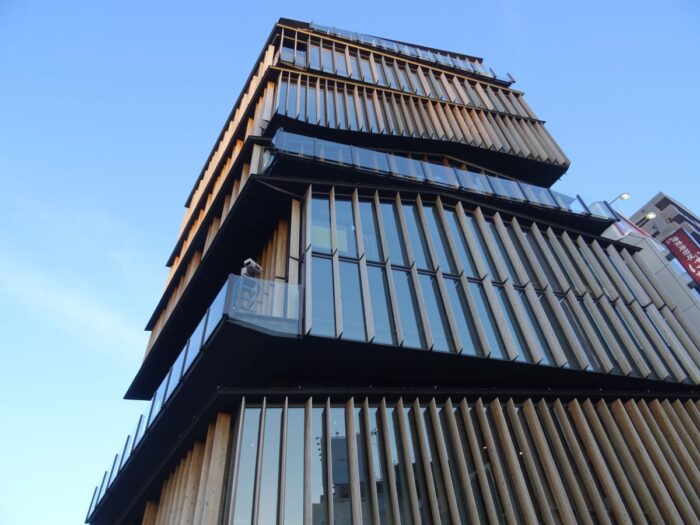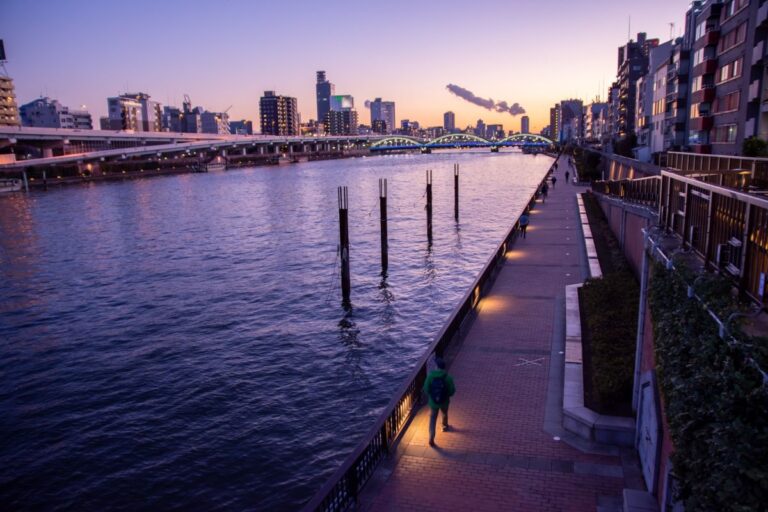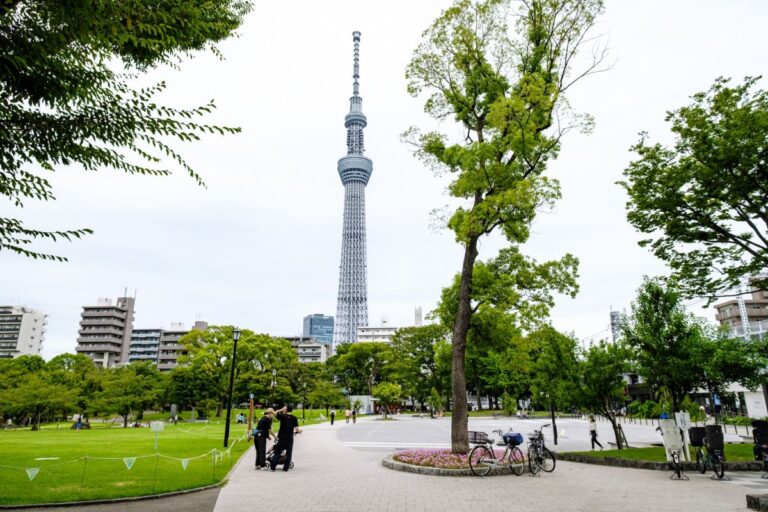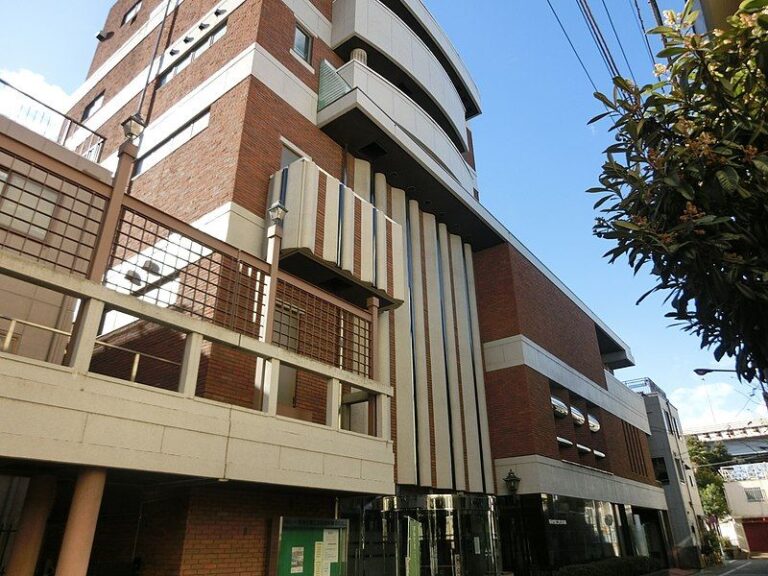The Asakusa Culture Tourist Information Center is a unique and stunning building located in Asakusa right next to Senesoji at the end of Nakamise Shopping Street. Designed by Kengo Kuma & Associates, the center was completed in 2012 and has since become a popular destination for tourists and locals alike.
The center is situated on the south side of Kaminariomon-dori Street, directly across from the Kaminarimon Gate, and serves as a hub for visitors to the Asakusa area. The design of the building is inspired by traditional Japanese architecture, with a modern twist that makes it stand out from its surroundings.

Key Takeaways
- Information counter, ticket sales, and foreign currency exchange are available on the 1st floor.
- The 8th-floor observation terrace offers a panoramic view of the Tokyo Sky Tree, the Asahi Beer Azumabashi Headquarters Building, and the flame sculpture in the Super Dry Hall
- From the Kaminarimon intersection, also known as the viewpoint for the Tokyo Sky Tree, you can see the Kaminarimon gate and the Asakusa Culture and Tourism Center at the same time
- The 8th floor observation terrace overlooks Sensoji Temple, Kaminarimon, Nakamise, Asakusa Hanayashiki, and the Asakusa View Hotel.
- Exhibition space on the 7th floor
- The 8th floor observation terrace overlooking Tokyo Sky Tree is available free of charge.
- Asakusa sundaes and ningyo-yaki shakes can be enjoyed at the 8th floor Asakusa Observation Cafe Miharashiya
- Features a rooftop terrace with stunning views of the surrounding area.
Location and Access
The Asakusa Culture Tourist Information Center is one of the biggest tourist information centers in Tokyo. It is located in front of the Kaminari-mon Gate, on the south side of Kaminari-mon-dori Street. The center is situated in a prime location, with easy access to several train stations and other tourist attractions.
If you are coming from Tokyo Metro Ginza Line Asakusa Station, take Exit No.2 and walk for just one minute to reach the center. From Tobu Isesaki Line (Tobu Skytree Line) Asakusa Station, it is just a five-minute walk. For those coming from the Toei Asakusa Station on the Asakusa Line, take Exit A4 and walk for two minutes to reach the center.
The center is open all year round, from 9:00 AM to 8:00 PM. The 8th floor observation terrace is open from 9:00 AM to 10:00 PM. The center is free to visit, and visitors can access a wide range of facilities and services, including tourist information, free Wi-Fi, a souvenir shop, and a café.
Architecture and Design
The impressive building was designed by Kengo Kuma & Associates, a leading architectural firm in Japan and was completed in 2012. The center was designed to serve as a hub for tourists visiting the area and to promote the local culture and history.
The building’s design was inspired by traditional Japanese architecture, specifically the torii gates found at Shinto shrines. The center’s facade is made up of wooden slats arranged in a grid pattern, creating a unique and visually striking appearance. The wooden slats also serve a functional purpose, providing shade and ventilation while allowing natural light to filter into the building.
The interior of the center is just as impressive as the exterior. The building’s multi-level design allows for a variety of spaces, including a tourist information center, conference rooms, an exhibition space, and a multi-purpose hall. The use of natural materials, such as wood and stone, creates a warm and inviting atmosphere that reflects the local culture.
The center’s design is also environmentally friendly. The building incorporates a number of sustainable features, such as a green roof that helps to reduce the building’s energy consumption and rainwater harvesting systems that help to conserve water.
Services and Facilities
The Asakusa Culture Tourist Information Center is a one-stop shop for all your travel needs. Here are some of the services and facilities that you can expect at this facility:
- Information Counter: The information counter is located on the first floor of the facility. Here, you can get information about tourist attractions, events, transportation, and more. The staff is friendly and knowledgeable, and they are always willing to help.
- Exhibition Space: The exhibition space on the first floor showcases the history and culture of Asakusa. The exhibits change regularly, so there is always something new to see.
- Café: The café on the first floor serves light meals and snacks. It’s a great place to take a break and relax.
- Observation Deck: The observation deck on the eighth floor offers a stunning view of Asakusa and the surrounding area. It’s open from 9:00 am to 10:00 pm.
- Free Wi-Fi: The facility offers free Wi-Fi, so you can stay connected while you’re on the go.
- Foreign Language Support: The staff at the information counter can speak English, Chinese, Korean, and other languages, so you can get the help you need in your native language.
Exhibitions and Events
The Information Center is not just a place to get information about the area, but also a hub for cultural exhibitions and events. The sixth and seventh floors are dedicated to showcasing various aspects of Japanese culture through exhibitions and events.
The exhibitions held here are always changing, so it’s worth checking out what’s on during your visit. Past exhibitions have included displays of traditional Japanese crafts, such as pottery and textiles, as well as contemporary art exhibitions featuring local artists.
In addition to exhibitions, the center also hosts a variety of cultural events, including traditional Japanese music performances, tea ceremonies, and calligraphy workshops.
Conclusion
The Asakusa Culture Tourist Information Center is a remarkable architectural masterpiece that showcases the unique blend of traditional Japanese elements and modern design. The building serves as a tourist information center and an urban signifier, connecting visitors with Asakusa’s past, present, and future.
The building’s design is a perfect example of how architecture can blend with the surrounding environment and create a harmonious space that is both functional and aesthetically pleasing. The use of wood and glass creates a warm and inviting atmosphere, while the intricate lattice pattern on the exterior adds a touch of elegance and refinement.
One of the most impressive features of the building is the spiral staircase that leads visitors up to the observation deck. The staircase is made of wood and steel and is designed to resemble a traditional Japanese lantern. The use of natural materials and the attention to detail make the staircase a work of art in itself.
The Asakusa Culture Tourist Information Center is not only a functional building but also an architectural wonder that has become a popular tourist attraction in its own right. It is a testament to the creativity and ingenuity of its designer, Kengo Kuma, and a shining example of how architecture can enhance our lives and enrich our experiences.
The Asakusa Culture and Tourism Center in Taito-ku, Tokyo was renovated and reopened in 2012, with an information counter, ticket sales, and foreign currency exchange on the 1st floor, an exhibition space on the 7th floor with panels showing viewpoints of the Tokyo Sky Tree, and a free admission area on the 8th floor.
On the 8th floor, there is a free observation terrace and the Asakusa Observation Cafe “Miharashiya” where you can enjoy Asakusa sundaes, ningyo-yaki shakes, and alcoholic beverages. In addition, there are computers available for information search and Wi-Fi access.
| Park Name | Asakusa Culture Tourist Information Center (Asakusa Bunkankanko Kanko Senta) 浅草文化観光センター |
|---|---|
| Park Address | 2-18-9 Kaminarimon, Taito-ku, Tokyo |






